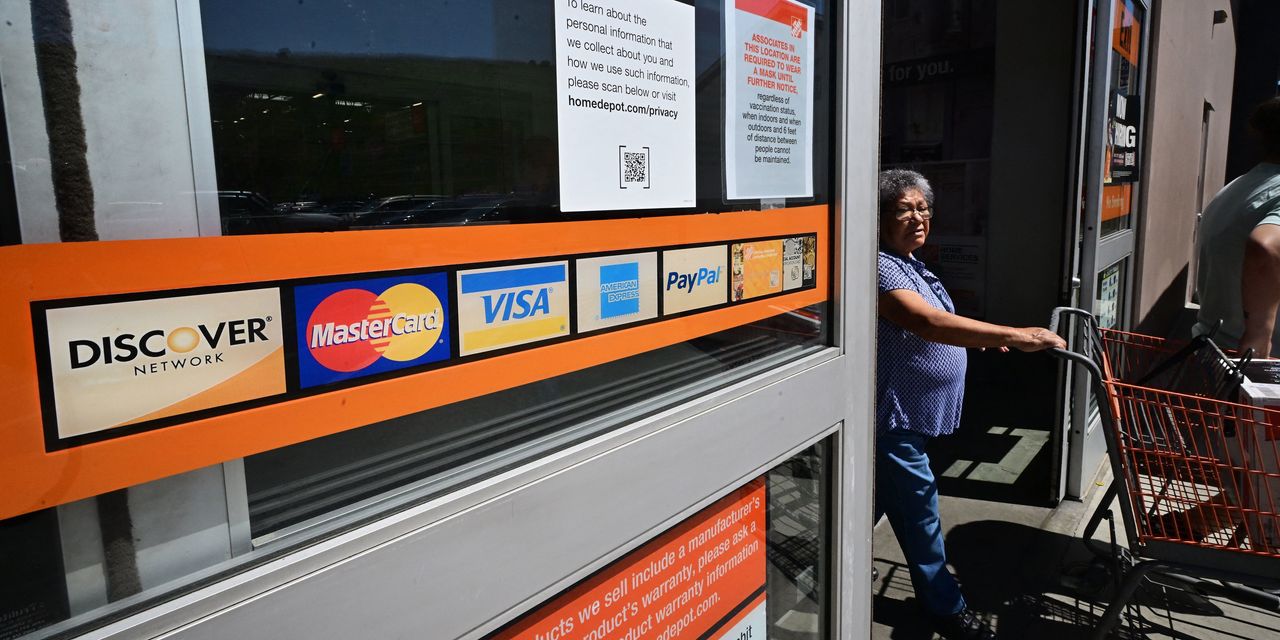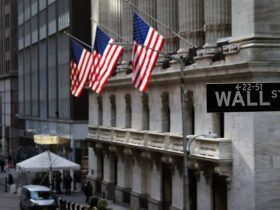Investors are turning their attention to September’s consumer price index report on Thursday for more clues about whether inflation is still too hot to put a decisive end to another Federal Reserve rate hike.
Wednesday’s producer price inflation report for last month came in above expectations, pushing up the policy-sensitive 2-year rate
BX:TMUBMUSD02Y
to a closing level of 5% on concerns that the Federal Reserve’s job isn’t done.
On the flip side, there’s still conviction in markets that policy makers will ultimately win their battle on inflation. That, along with flight-to-safety trades fueled by Israel’s war against Hamas, supported aggressive buying of long-term government debt, which sent 10- and 30-year yields down to their lowest levels of this month.
Read: Israel hammers neighborhoods in Gaza as war claims 2,100 lives on both sides
September’s CPI report on Thursday is just one piece of data and may not be enough on its own to completely upend the market’s current bifurcated line of thinking, analysts said. Still, with economists expecting annual headline and core CPI readings to come in well above the Fed’s 2% inflation target, there’s a risk that many in financial markets may turn out to have been a bit overly optimistic about the central bank’s ability to end rate hikes.
“We still see pressures on inflation on multiple fronts, especially now stemming from international uncertainty,” said economist Lauren Henderson of Stifel, Nicolaus & Co. in Chicago. Like economists polled by The Wall Street Journal, Stifel expects Thursday’s CPI report to show a 0.3% monthly increase in headline and core inflation for September, along with 3.6% and 4.1% year-over-year rates for each, respectively.
“While it’s great that CPI has come down from peaks, it’s still likely to be over 3% or near 4% — almost double the Fed’s target,” she said via phone on Wednesday. “So we think the Fed still has more work to do to tame inflation. The market’s having a hard time accepting further rate increases. But given the still heightened levels of inflation, we think the Fed will raise rates at least one more time by the end of the year, in either November or December, and stay higher for longer. We don’t see the Fed being able to cut rates anytime soon, let alone the start of the year.”
The U.S. government-debt market has undergone repeated rounds of volatile trading as investors attempt to adjust to multiple, conflicting narratives. Just last Friday, a blowout official jobs report for September had financial-market participants considering a slightly greater likelihood of a quarter-point Fed rate hike on Nov. 1 — pushing the 30-year rate into another 16-year high as Treasurys sold off.
Then, the emergence of deadly conflict in the Middle East over the past weekend prompted traders and investors to suddenly shift course. They flocked to the safety of government debt on Tuesday when the cash market reopened, following Monday’s Columbus and Indigenous Peoples holiday in the U.S. A growing conviction that the Fed won’t likely raise rates again also helped drive Treasury yields sharply lower on Tuesday, sending U.S. stocks to a third day of gains.
The same themes remained in place during Wednesday’s session, pushing long-term yields down for a second day, only this time with a touch of rising worry about inflation. September’s hot producer price index briefly took the momentum out of Dow industrials
DJIA
and the S&P 500
SPX,
though they both managed to finish higher, while the 2-year yield rose above 5% amid a renewed selloff.
Thursday’s CPI report “could come in hot given producer prices were supported on higher energy and food prices,” said Edward Moya, a senior market analyst for the Americas at Oanda Corp. “The latest round of Fed speak supported the initial move higher for stocks, but too many geopolitical risks and [the] start of earnings season has investors cautiously buying into this rally. “
The Israel-Hamas conflict and continued hopes for an end to Fed rate hikes at some point kept buying alive in long-dated Treasurys. Ten-
BX:TMUBMUSD10Y
and 30-year yields
BX:TMUBMUSD30Y
finished at 4.596% and 4.737%, respectively, the lowest closing levels since Sept. 29.
Meanwhile, fed funds futures traders grew more confident about the likelihood of no further action by the central bank in three weeks, even though minutes of the Fed’s September meeting pointed to broad support for another rate hike at a future meeting. Traders now see a 91.5% likelihood of a pause on Nov. 1, which would leave the Fed’s main interest-rate target between 5.25%-5.5%. Fed Gov. Christopher Waller said on Wednesday that the recent run-up in yields has been doing some of the central bank’s job of slowing the economy down.
Read the full article here











Leave a Reply